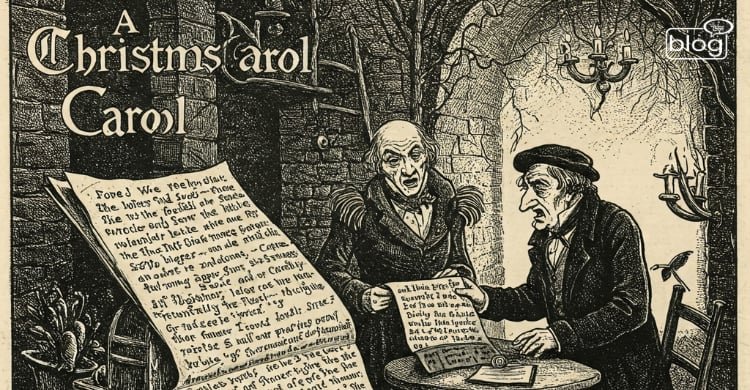A Christmas Carol is a novel written by Charles Dickens that combines the elements of improvement and humanity. It extends insight into Victorian life and gives greed, generosity, and redemption an important place. Ebenezer Scrooge, the protagonist of the story, is extremely stingy and cold-hearted but, through some supernatural element, changes his heart. That is why the moral lesson and also the timelessness of celebrating compassion make this story so catchy to its readers.
It begins on Christmas Eve in the dismal office of Scrooge, depicting his grim personality. A person can notice that his poor clerk, Bob Cratchit, is warming up with barely sufficient fire while he is abhorring merry, Christmassy cheer. Those who come seeking charity are sent back home and rejected with his scornful “nea.” Even the invitation to a Christmas dinner by his jolly nephew Fred falls terribly without any reception. This first scene therefore sets the tone for Scrooge’s disliking of people and underlines his obsession with money.
Later that night, Scrooge was startled by a ghostly visit from his old business partner, Jacob Marley, who was dead. In heavy chains, Marley was an eerie yet symbolic vision. He forewarns Scrooge of the horrible fate that will be his if he doesn’t reform himself. Chains that Marley forged in life and which he is bound by now serve as a grim reminder of life without compassion. The visitation of the ghost puts Scrooge’s journey of self-discovery and redemption into motion.
The Ghost of Christmas Present is jolly, a character of warmth and plenty. The spirit shows Scrooge with much jollity and scenes of gaiety and charity during the holiday. The ghost shows Scrooge how poor the Cratchit family struggles and yet is thankful from busy marketplaces to modest feasts. Tiny Tim, Bob Cratchit’s ailing son, reaches into Scrooge’s heart and plants an element of empathy within him. This spirit underlined the importance of generosity and what Christmas was truly all about.
The Ghost of Christmas Past takes Scrooge on a journey into his memory. This weird mixture of youth and age spirits shows him the most poignant moments of his life: the scenes of his lonely childhood, the joyous festivals of his young life evoke in him sorrow and nostalgia. The ghostly figure of his lost love, Belle, makes Scrooge remember the happiness he gave up for materialistic gain. These memories confront him with the choices that have determined his present misery and regret.
The Ghost of Christmas Yet to Come now appears in a dark, forbidding figure. Silent and ominous, this spirit shows grim visions of Scrooge’s future: he sees himself dead, unmourned and unremembered, and the Cratchit family mourning the passing of Tiny Tim. These visions of terror shake Scrooge to the core of his soul, and he begs for an opportunity to alter his fate. The ghost does not say anything but keeps quiet, something that really shows how weighty Scrooge’s choices are and the immediacy of his change.
On Christmas morning, Scrooge woke up a new man—so grateful and jubilant, he set about spreading goodness wherever he went. He gave liberally to charity, provided a feast for the Cratchits, and renewed his relationship with Fred. Now Scrooge serves as that hope and redemption, that it is never too late to turn in another direction. The one clear message that Dickens’ tale leaves the reader with is that the spirit of Christmas resides in loving, giving, and changing.
Luminous character sketches and an engrossing story weave an ageless fable of redemption in A Christmas Carol. The change of Scrooge from greed to charity reminds one of the strength of kindness and the beauty of human bonding. Dickens’s masterpiece continues to inspire readers to usher in the real spirit of the season.
To read more blogs like this click here
Writer
Fazlul Karim,
Intern, Content Writing Department
YSSE

